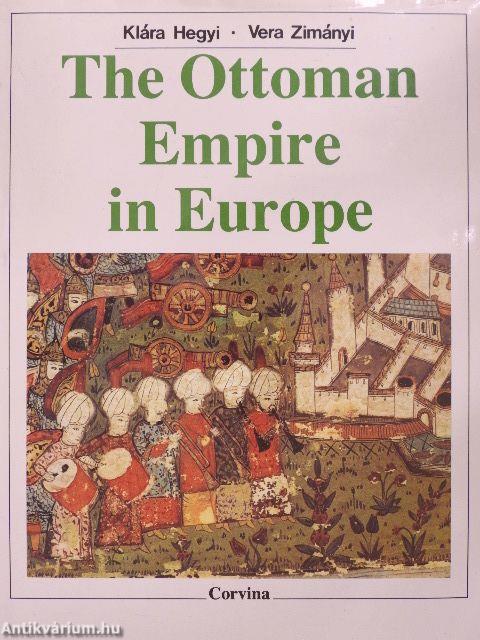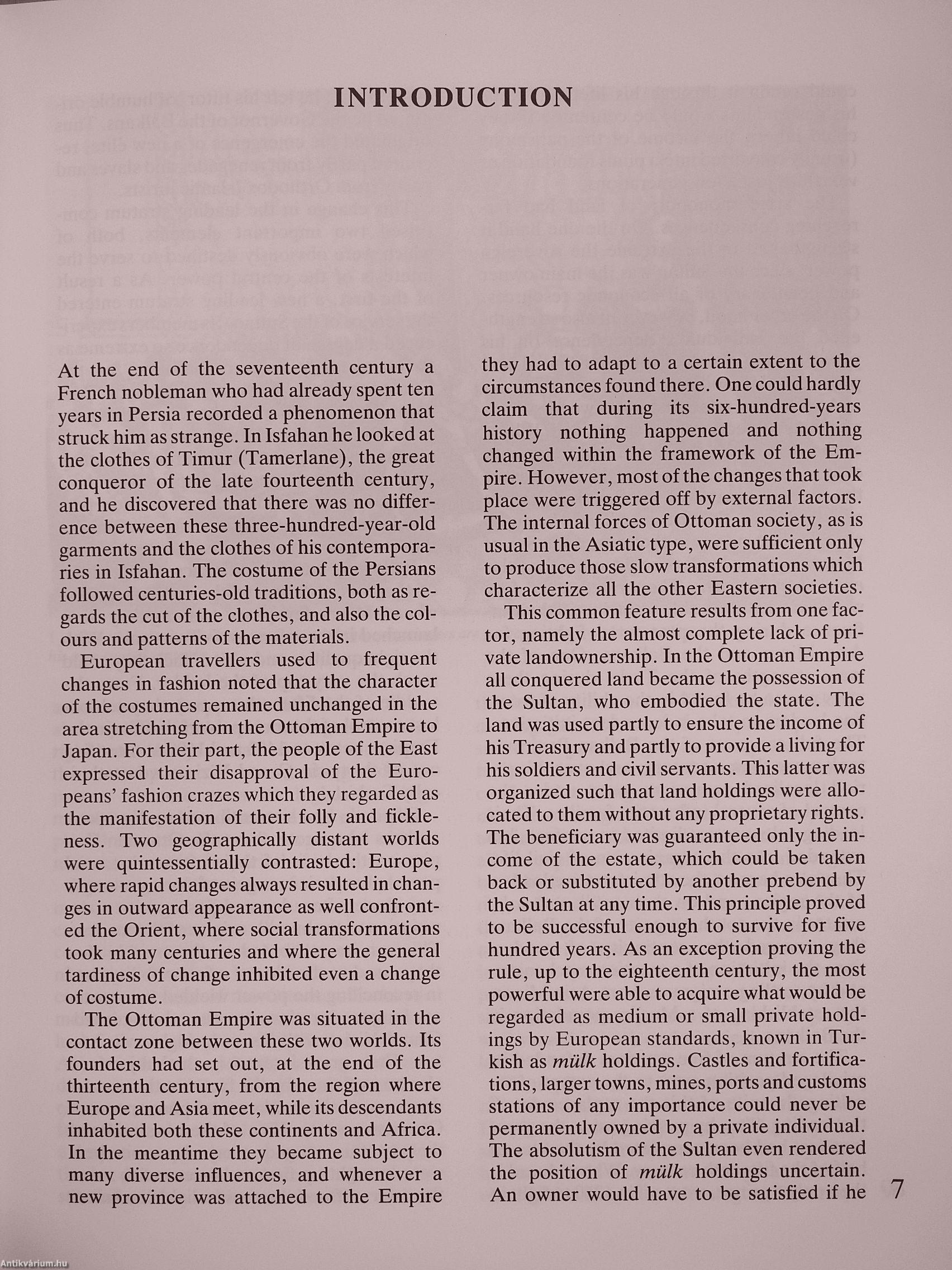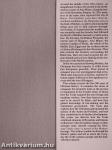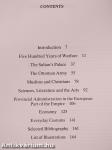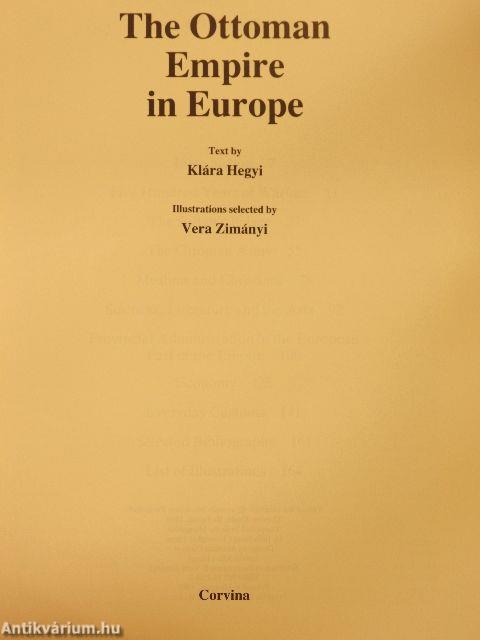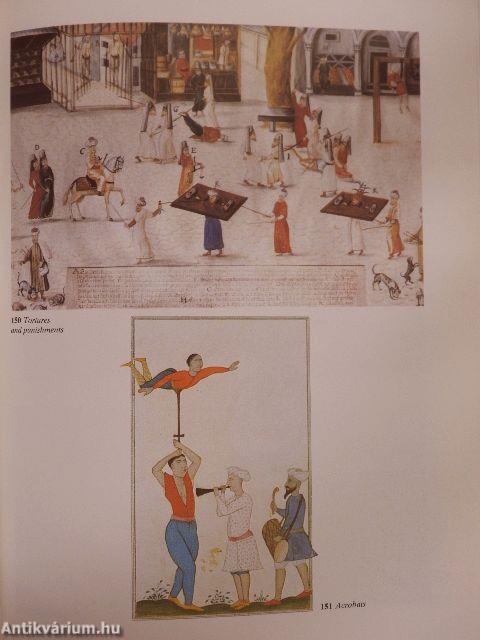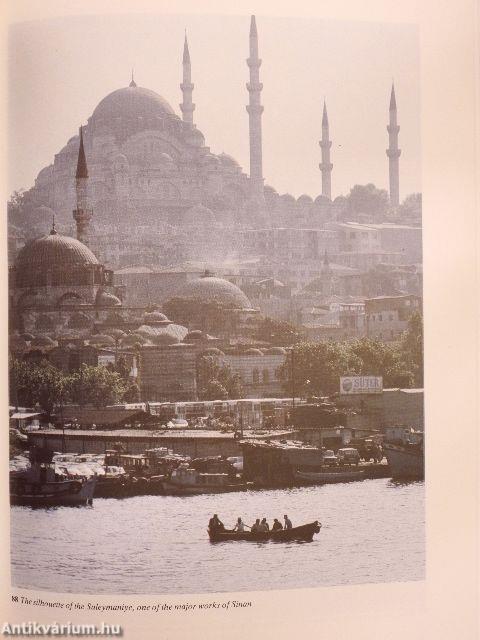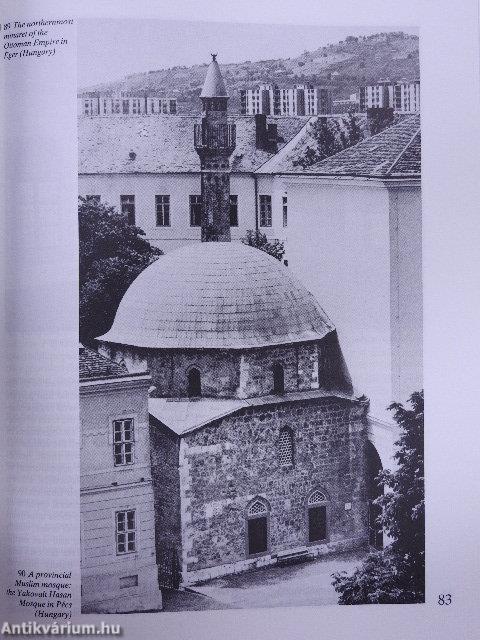1.067.317
kiadvánnyal nyújtjuk Magyarország legnagyobb antikvár könyv-kínálatát

VISSZA
A TETEJÉRE
JAVASLATOKÉszre-
vételek
The Ottoman Empire in Europe
| Kiadó: | Corvina Kiadó |
|---|---|
| Kiadás helye: | Budapest |
| Kiadás éve: | |
| Kötés típusa: | Vászon |
| Oldalszám: | 167 oldal |
| Sorozatcím: | |
| Kötetszám: | |
| Nyelv: | Angol |
| Méret: | 26 cm x 19 cm |
| ISBN: | 963-13-2301-3 |
| Megjegyzés: | Színes és fekete-fehér fotókkal, reprodukciókkal. |
naponta értesítjük a beérkező friss
kiadványokról
naponta értesítjük a beérkező friss
kiadványokról
Előszó
TovábbFülszöveg
i! . ! ¦
P !
J . I
I
I ;
i' i
líl
,1 I . 1 , • :
i I 1 1,
'n' ' .
' 1
I ¦ l.'l 'i'l ' ^
¦ '''i, i ^
ít'' i li ' 1 -, - i
Around the middle of the 13th century, an insignificant Turkic tribe settled in the northwestern corner of Asia Minor, along the border of the Byzantine Empire. In 1326, members of the same tribe captured the city of Bursa. Two hundred years later, their descendants annihilated the Hungarian army on the field of Mohács. Leaflets announcing this defeat gave rise to wild rumours throughout Europe. It seemed that this wariike race was invincible and the decades that followed the Battle of Mohács seemed to justify such a fear. By this time, the Balkan Peninsula, the central part of Hungary, Asia Minor, the western reaches of Persia, the whole of the Middle East, Egypt and the northern shores of Africa all belonged to the Ottomans. They had overrun the territory surrounding the Black Sea, their navy had occupied the Aegean Islands and was... Tovább
Fülszöveg
i! . ! ¦
P !
J . I
I
I ;
i' i
líl
,1 I . 1 , • :
i I 1 1,
'n' ' .
' 1
I ¦ l.'l 'i'l ' ^
¦ '''i, i ^
ít'' i li ' 1 -, - i
Around the middle of the 13th century, an insignificant Turkic tribe settled in the northwestern corner of Asia Minor, along the border of the Byzantine Empire. In 1326, members of the same tribe captured the city of Bursa. Two hundred years later, their descendants annihilated the Hungarian army on the field of Mohács. Leaflets announcing this defeat gave rise to wild rumours throughout Europe. It seemed that this wariike race was invincible and the decades that followed the Battle of Mohács seemed to justify such a fear. By this time, the Balkan Peninsula, the central part of Hungary, Asia Minor, the western reaches of Persia, the whole of the Middle East, Egypt and the northern shores of Africa all belonged to the Ottomans. They had overrun the territory surrounding the Black Sea, their navy had occupied the Aegean Islands and was now fighting in the western part of the Mediterranean.
In the two centuries following Mohács, the Ottomans lost their capacity to strike terror into Europeans generally. Their period of conquest was over and stagnation had set in. Then came long years of decline, and the Ottoman empire suffered its first significant reverse with the loss of Hungary.
This volume reviews the first 500 years of Ottoman history. It examines the series of conquests but primarily looks at the process of acquisition in the broader sense. It shows how the Turks acquired the arts of siege and maritime warfare, how they learnt to serve and to be served by Islam, and how they gained knowledge of law-making and the centralized government. The book also explains how the Ottomans appropriated the science of the Arabs and Persians, and how they contributed to its further development. The reader can discover how the Turks combined elements of Byzantine and Islamic architecture with the familiar images of their nomadic tents, thereby creating the Ottoman-Turkic cami—a marvel of the Moslem heritage. The authors conduct us through the Sultan's palace and tell us about the everyday Ufe of the common people and the festivals they enjoyed. Vissza
Témakörök
- Idegennyelv > Idegennyelvű könyvek > Angol > Művelődéstörténet
- Idegennyelv > Idegennyelvű könyvek > Angol > Történelem > Európa története > Egyéb
- Idegennyelv > Idegennyelvű könyvek > Angol > Történelem > Egyéb
- Művelődéstörténet > Kultúra > Története
- Történelem > Idegennyelvű > Angol
- Történelem > Kontinensek szerint > Európa, európai országok története > Egyéb
- Történelem > Politika > Külpolitika > Egyéb
- Történelem > Kontinensek szerint > Ázsia, ázsiai országok története > Közel-Kelet
- Történelem > Középkor > Egyéb
- Történelem > Újkor > Egyéb
Megvásárolható példányok
Nincs megvásárolható példány
A könyv összes megrendelhető példánya elfogyott. Ha kívánja, előjegyezheti a könyvet, és amint a könyv egy újabb példánya elérhető lesz, értesítjük.



